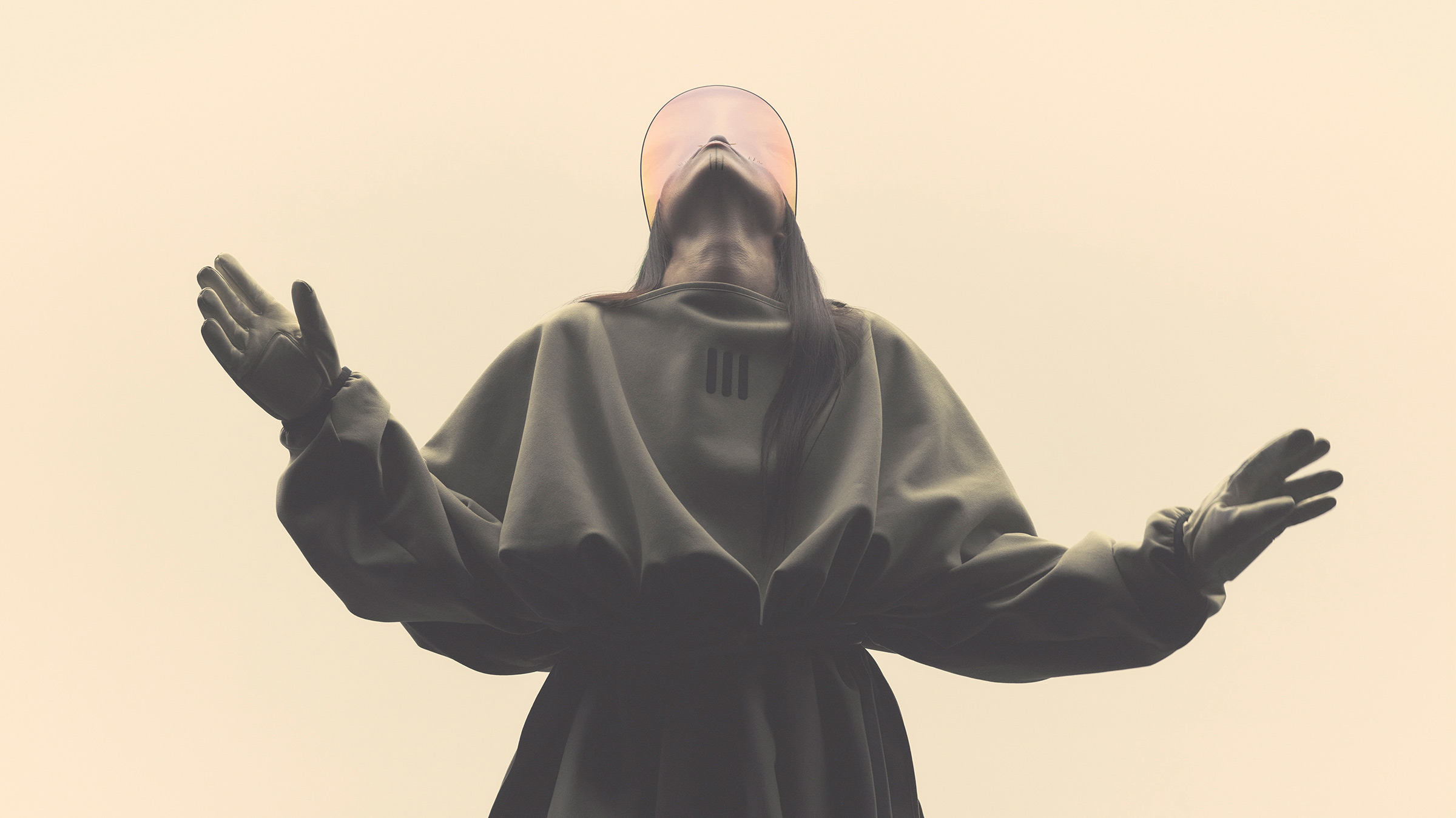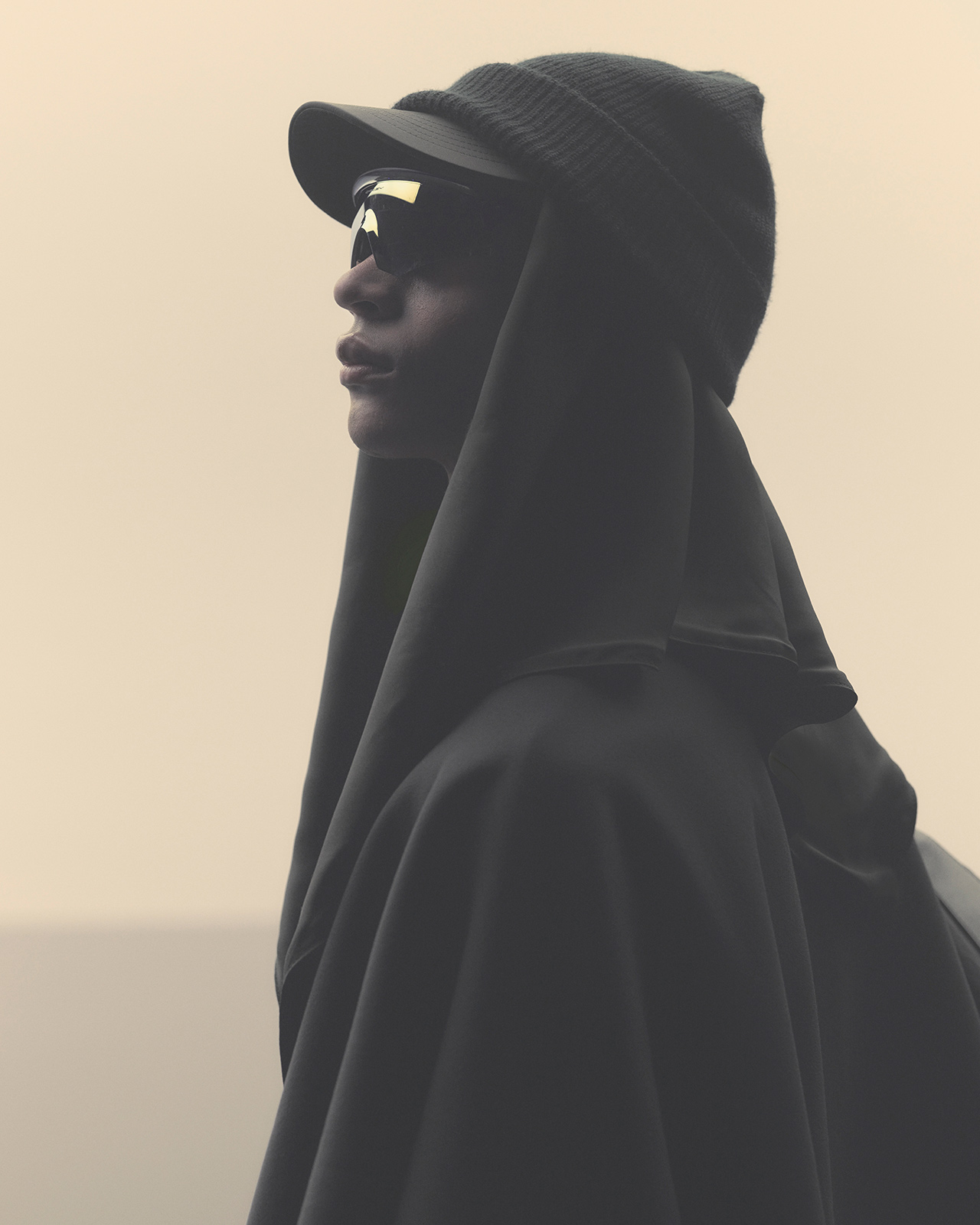The brand’s recent Adidas collaboration combines the ease of athleisure with the singularity of nature
Jerry Lorenzo is a master of the grand reveal. Call it swagger, the pastiche of a good businessman, or the vestige of a past career in party promoting: The founder and creative director of Fear of God has built an empire, thanks in part to an almost unparalleled ability to curate mystique.
This jouissance was in full play as I was led through a maze of massive walls draped with fabric in a dimly lit warehouse obscuring the installation that was to be unveiled later that evening. It was a part of the long-awaited release of Athletics, an Adidas-engineered collaboration and final branch of Fear of God’s ‘Three Pillars.’ I met Lorenzo at what can only be described as a postmodern campfire: a circular enclosure of petite granite boulders, which we used as chairs, surrounded by sparsely placed glowing orbs. In conversation, Lorenzo is soft-spoken. His father was a minor league baseball coach for much of his life, resulting in a childhood scattered across the continental US. “We each have our own individual life experience and they’re all valid,” he says, responding to a question about the varied landscapes of his childhood impacted his aesthetic sensibility. “My talent is the ability to bring all the things I’ve been exposed to into a singular point of view. Everything from the history of being Black in America, to my spirituality, to all the other cultural nuances that I’ve been exposed to.”
“The installation felt like a vast, imposing setting meant to simulate the experience of being tiny in the face of nature.”
And bring them together he did, with the unveiling of the ‘Athletics Atmosphere’: an event that functioned simultaneously as a pop-up art installation, party, collection drop, and church service. In the center was a fortress-like structure, covered wall-to-wall with monitors, where the campaign film showed a bird’s-eye view of grand, sweeping natural environments, intercut by shots of models strutting through a liminal, desert planet, while sporting the collection. There’s an architectural sway behind Fear of God, which occurred to me after the brand’s first runway show several months prior. In our interview, Lorenzo cited Brutalism—Soviet Russian bus stops in particular—as a personal inspiration.
Beyond the fortress, the entire warehouse was shrouded in darkness, like the proverbial storm clouds circling the kingdom of heaven. Invitees gathered inside and tried their best at sustaining small talk amidst the immersive sensory stimulation. While I’m sure many of the familiar fixtures of LA society were present, there was a flattening effect; if someone important was near you, it was either too dark or too loud to notice. When asked about the experience, painter Cassidy Putnam referenced the Kantian sublime: “The installation felt like a vast, imposing setting meant to simulate the experience of being tiny in the face of nature.” In this case, the environments featured were a metaphorical placeholder for God’s glory. In a press release, Lorenzo said, “The house is built to mirror the very nature and design of the highest being, where there is both unity and diversity in the trinity.”
Inevitably, there was the presence of LA’s more pernicious Influencers, later using the brutalist structure as a photo backdrop. Even so, the atmosphere created a hermetically-sealed air of dignity over the attendees. This elevation of the consumer is fundamental to Lorenzo’s design ethos. In an interview with Mav Carter, he said, “How can our clothing make someone feel like the best version of themselves? Like, let the clothing kind of become second to their personality or their character. That’s the intention. Not to be too loud, but effortless and elegant at the same time.”
The collection itself had all the hallmarks of the brand’s DNA, spanning Fear of God, Essentials, and Athletics—namely comfortable and sophisticated athleisure charged with religious intent. Similar to the general ambiance of the campaign film, the space-age silhouettes were nice touches, imbuing the pieces with a sleekness subtle enough not to overcomplicate the neutral-palette simplicity that is synonymous with Fear of God. From the suede ponchos to the hooded bodysuits, Athletics is clothing fitting for your living room, as much as it is gear for trekking across some alien terrain.
I had become aware of Fear of God in college through the Baader-Meinhof effect: the cryptic advertisements wheatpasted across LA, many of which didn’t actually showcase any of the clothing, convincing me that the brand’s presence was all but ubiquitous. Once I noticed Fear of God, I saw it everywhere: on campus, in cafes, at the gym, in airports, and so forth. In anticipation of the release of Athletics, I was curious about the cult appeal of the brand that had coalesced around what is essentially pure, unadulterated fetish appeal (in the anthropological sense of the word). There are only so many ways to reinvent a t-shirt, and I don’t get the sense that’s Lorenzo’s intention to begin with. If there are logos present, they’re subtle enough to be missed. Fear of God innovates design by constructing symbolic clothing without ever actually employing symbols.


















